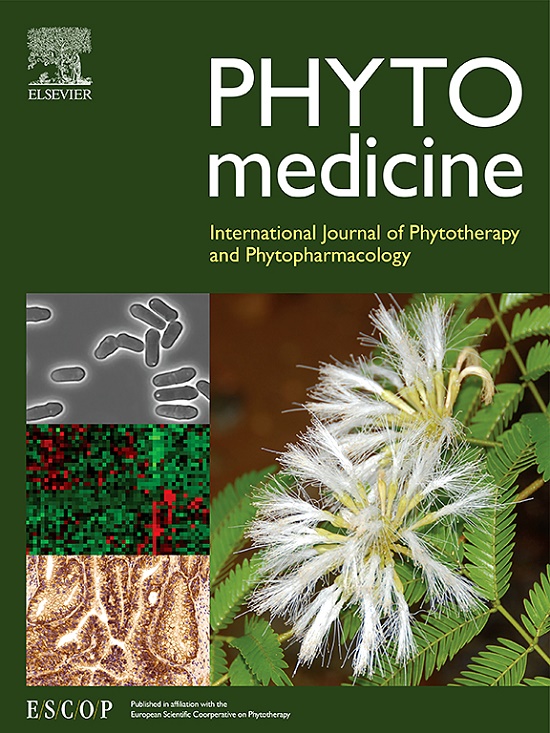Epimedin C promotes mitochondrial transfer and delays thymus atrophy in 4-VCD induced mimetic-menopausal mice
IF 6.7
1区 医学
Q1 CHEMISTRY, MEDICINAL
引用次数: 0
Abstract
Background
Prevention of thymus atrophy during menopause is of great significance for improving the immune function and overall health of menopausal women. Epimedin C is one of the major bioactive compounds in Herba Epimedii, a traditional herbal medicine for the treatment of menopausal syndrome in China, but the action and mechanism of Epimedin C in the treatment of menopausal thymus atrophy remains unclear.
Objective
To study the effect of Epimedin C on thymus atrophy in 4-vinylcyclohexene diepoxide (4-VCD) induced mimetic-menopausal mice and explore its mechanism from new perspectives of tunneling nanotubes (TNTs) formation and mitochondrial transfer (MitoT).
Method
The effects of Epimedin C in the 4-VCD induced menopause-like phenotype in mice were observed, and the thymic output function was evaluated by the quantitative detection of T cell receptor excision circles (TRECs). The structure of the thymus was observed by H&E. The arrangement and quantity of different cell subpopulations of thymic epithelial cells (TECs) and thymocytes were detected by multiple fluorescent staining and flow cytometry. Mitochondrial morphology was observed with transmission electron microscopy. LC-MS/MS was used to analyze and identify the differential protein expression in thymus before and after Epimedin C treatment. Actin polymerization inhibitor was used to verify the possible mechanism of Epimedin C. The treadmilling-balance of actin, TNTs formation, and MitoT processes were observed by specific fluorescent probe labeling. The interaction between G-actin, Thymosin β4 (Tβ4), and Epimedin C were studied by protein cross-linking assay.
Results
Epimedin C significantly increased the thymus weight and the area of the thymus medulla, increased the grip strength and bone strength in 4-VCD induced mimetic-menopausal mice, and enhanced ovarian secretion function. It could affect the thymus output, increase CK5 and CK8 expression, maintain the reticular structure of TECs, inhibit the differentiation of thymocytes into double positive cells (CD4+CD8+) and CD4SP (CD3+TCR β+CD4+CD8-) cells. Epimedin C promoted the conversion of G-actin to F-actin and accelerated MitoT via stimulating the TNTs formation, which related with the downregulation of Tβ4 and obstruction to the formation of Tβ4-G-actin complex.
Conclusion
Epimedin C can promote TEC activity in 4-VCD induced mimetic-menopausal mice by decreasing the expression of Tβ4, inhibiting the binding of Tβ4 to G-actin, promoting the F-actin polymerization and the TNTs-depended MitoT.

求助全文
约1分钟内获得全文
求助全文
来源期刊

Phytomedicine
医学-药学
CiteScore
10.30
自引率
5.10%
发文量
670
审稿时长
91 days
期刊介绍:
Phytomedicine is a therapy-oriented journal that publishes innovative studies on the efficacy, safety, quality, and mechanisms of action of specified plant extracts, phytopharmaceuticals, and their isolated constituents. This includes clinical, pharmacological, pharmacokinetic, and toxicological studies of herbal medicinal products, preparations, and purified compounds with defined and consistent quality, ensuring reproducible pharmacological activity. Founded in 1994, Phytomedicine aims to focus and stimulate research in this field and establish internationally accepted scientific standards for pharmacological studies, proof of clinical efficacy, and safety of phytomedicines.
文献相关原料
公司名称
产品信息
索莱宝
4% paraformaldehyde solution
 求助内容:
求助内容: 应助结果提醒方式:
应助结果提醒方式:


